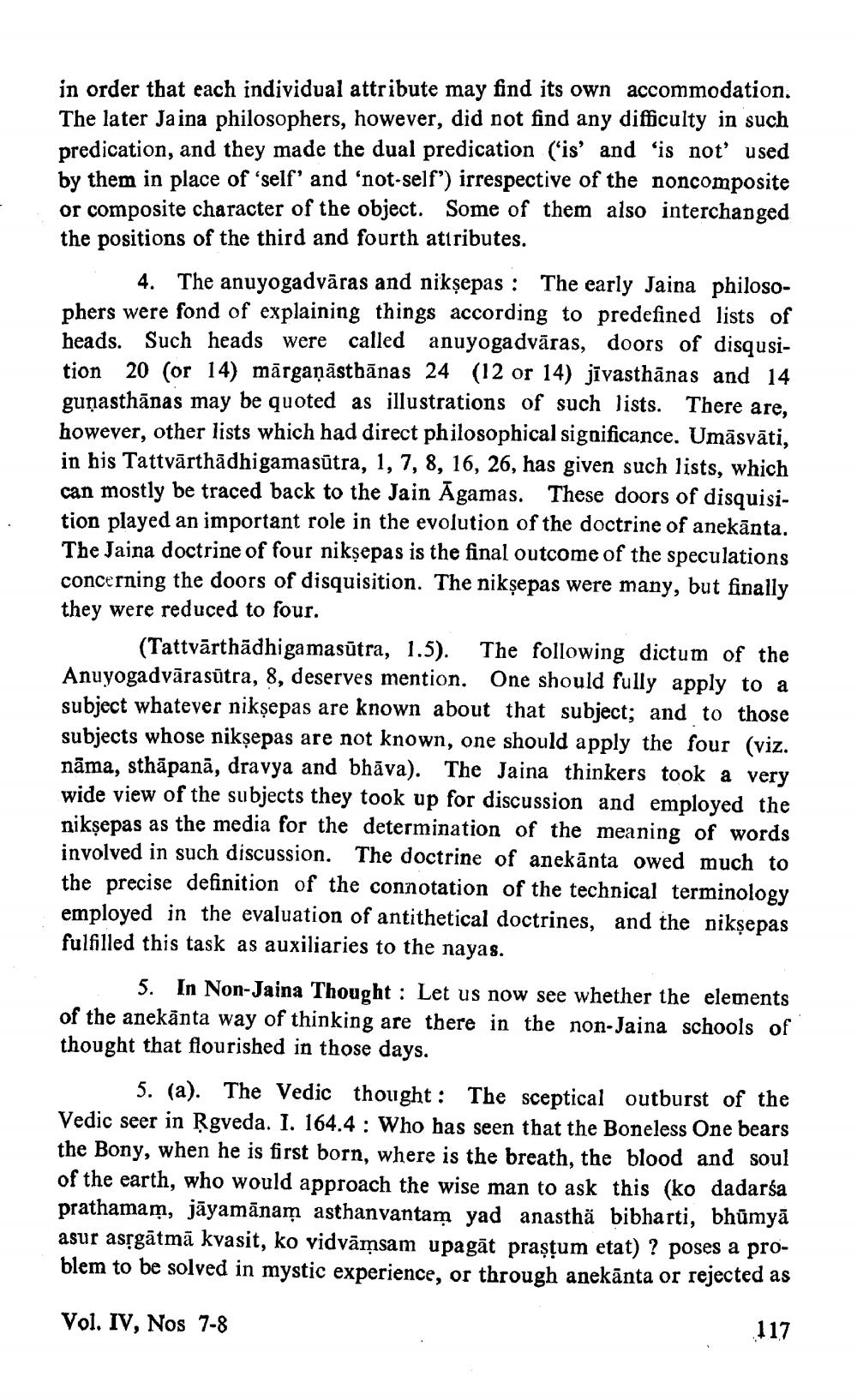________________
in order that each individual attribute may find its own accommodation. The later Jaina philosophers, however, did not find any difficulty in such predication, and they made the dual predication ('is' and 'is not used by them in place of 'self' and 'not-self') irrespective of the noncomposite or composite character of the object. Some of them also interchanged the positions of the third and fourth attributes.
4. The anuyogadvāras and nikṣepas : The early Jaina philosophers were fond of explaining things according to predefined lists of heads. Such heads were called anuyogadvāras, doors of disqusition 20 (or 14) mārgaņāstbānas 24 (12 or 14) jīvasthānas and 14 gunasthānas may be quoted as illustrations of such lists. There are, however, other lists which had direct philosophical significance. Umāsvāti, in his Tattvārthādhigamasūtra, 1, 7, 8, 16, 26, has given such lists, which can mostly be traced back to the Jain Agamas. These doors of disquisition played an important role in the evolution of the doctrine of anekānta. The Jaina doctrine of four nikṣepas is the final outcome of the speculations concerning the doors of disquisition. The nikșepas were many, but finally they were reduced to four.
(Tattvārthādhigamasūtra, 1.5). The following dictum of the Anuyogadvārasūtra, 8, deserves mention. One should fully apply to a subject whatever nikṣepas are known about that subject; and to those subjects whose nikṣepas are not known, one should apply the four (viz. nāma, sthāpanā, dravya and bhāva). The Jaina thinkers took a very wide view of the subjects they took up for discussion and employed the nikṣepas as the media for the determination of the meaning of words involved in such discussion. The doctrine of anekānta owed much to the precise definition of the connotation of the technical terminology employed in the evaluation of antithetical doctrines, and the nikṣepas fulfilled this task as auxiliaries to the nayas.
5. In Non-Jaina Thought : Let us now see whether the elements of the anekānta way of thinking are there in the non-Jaina schools of thought that flourished in those days.
5. (a). The Vedic thought: The sceptical outburst of the Vedic seer in Rgveda. I. 164.4 : Who has seen that the Boneless One bears the Bony, when he is first born, where is the breath, the blood and soul of the earth, who would approach the wise man to ask this (ko dadarśa prathamam, jāyamānam asthanvantam yad anasthä bibharti, bhūmyā asur asșgātmā kvasit, ko vidvāmsam upagāt prașțum etat) ? poses a problem to be solved in mystic experience, or through anekānta or rejected as
Vol. IV, Nos 7-8
117




